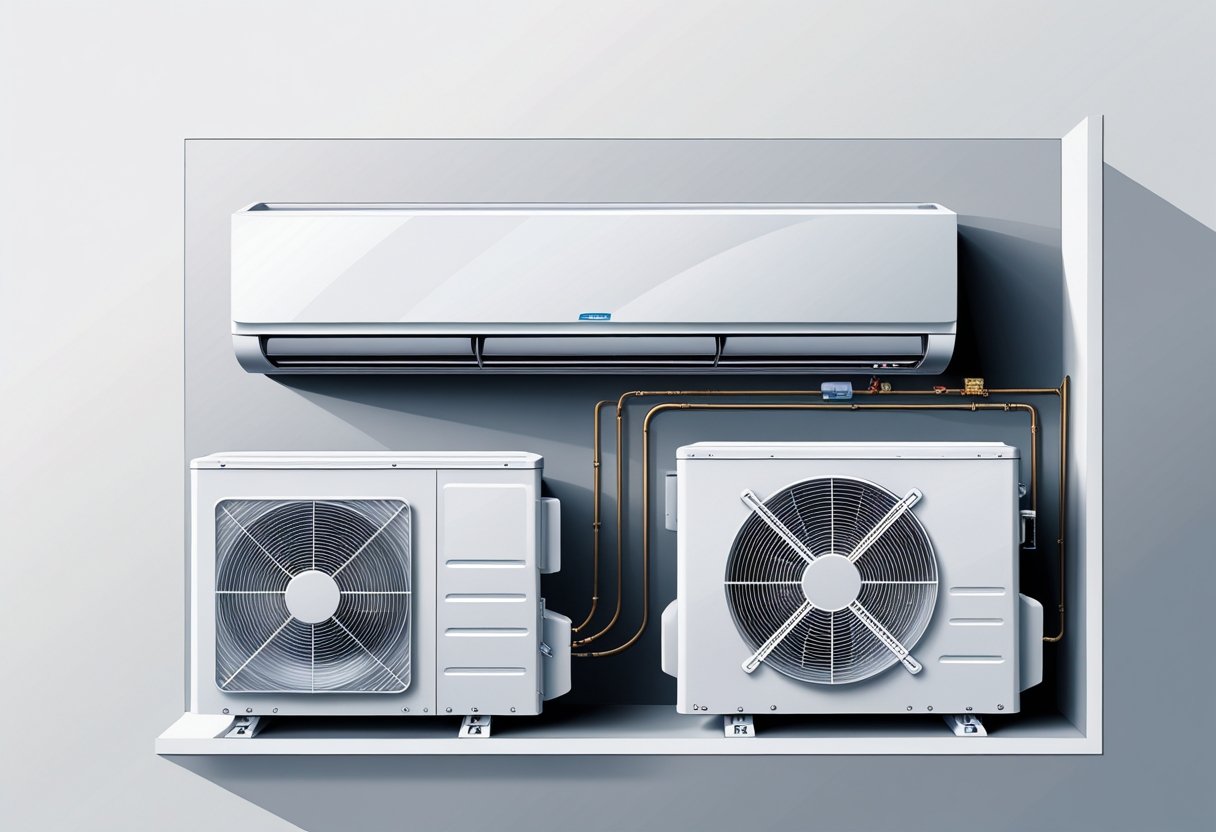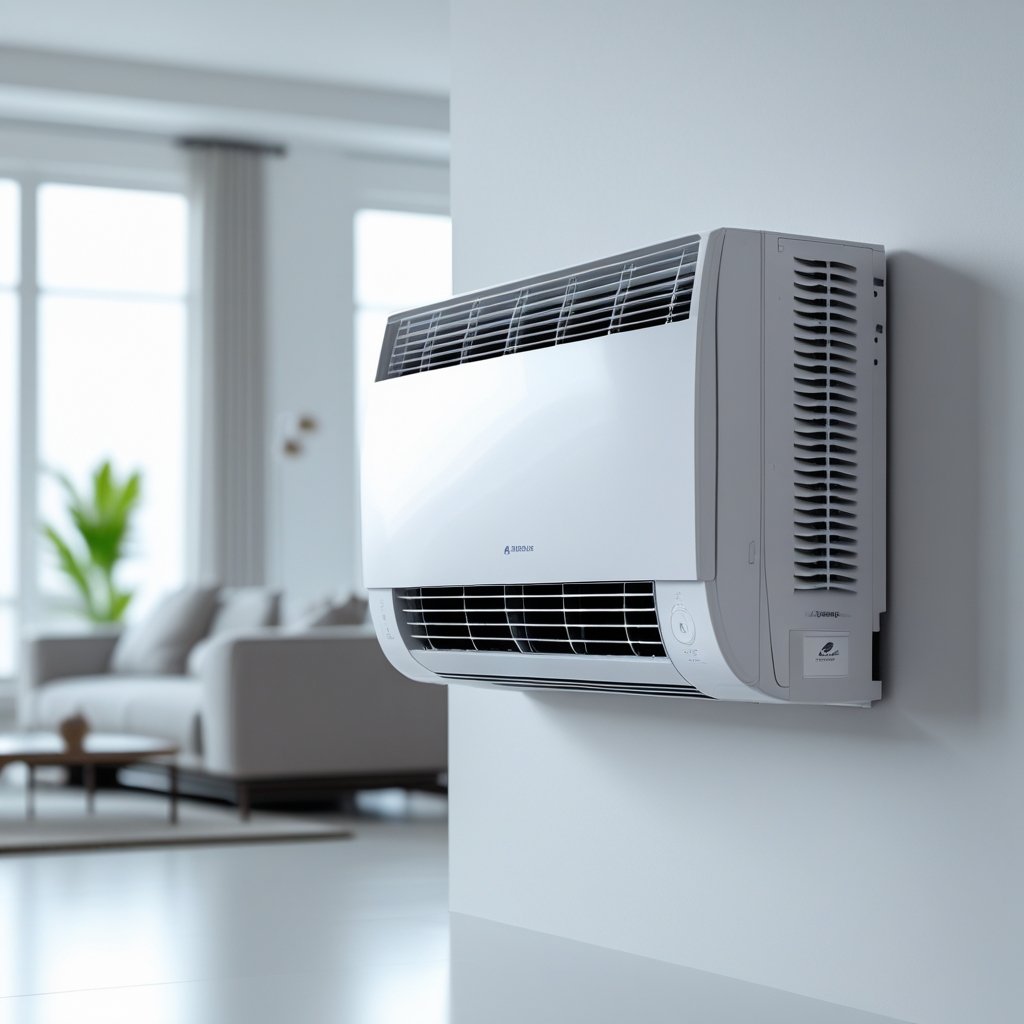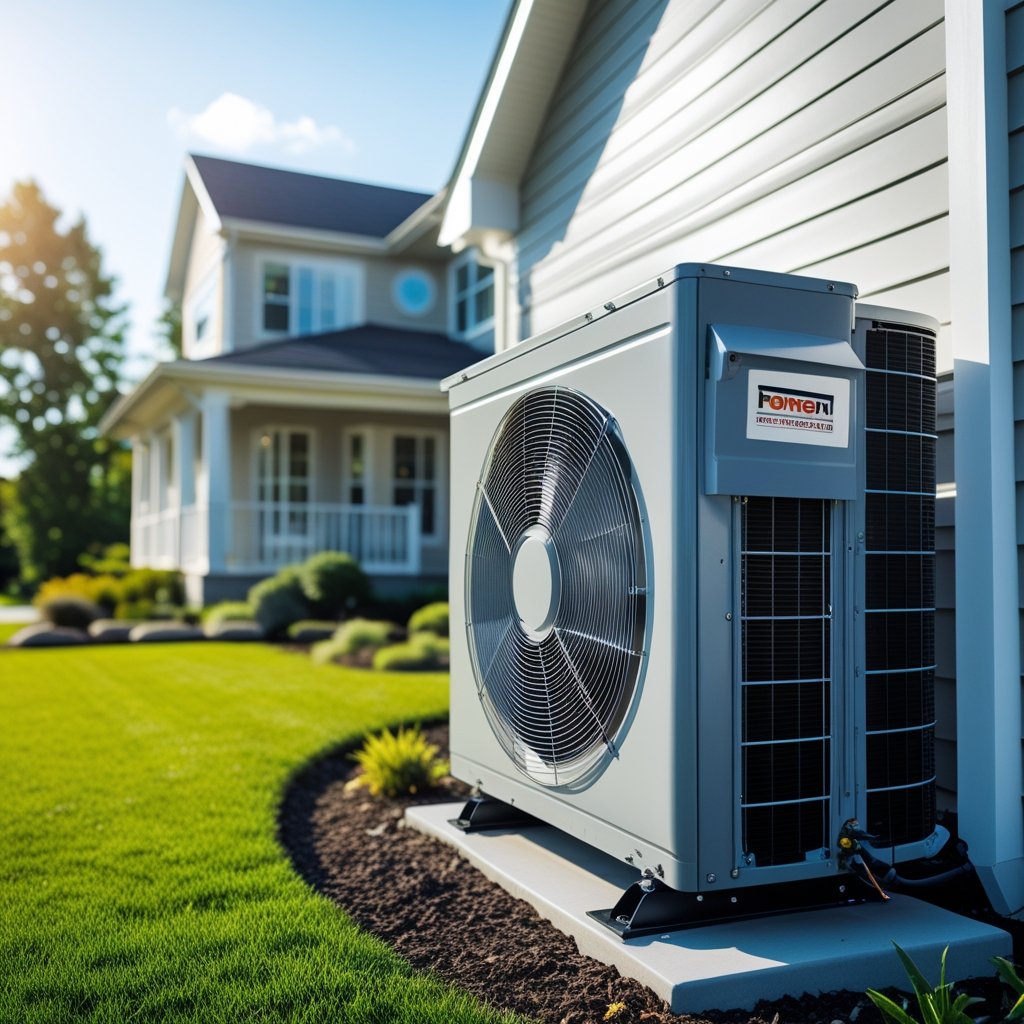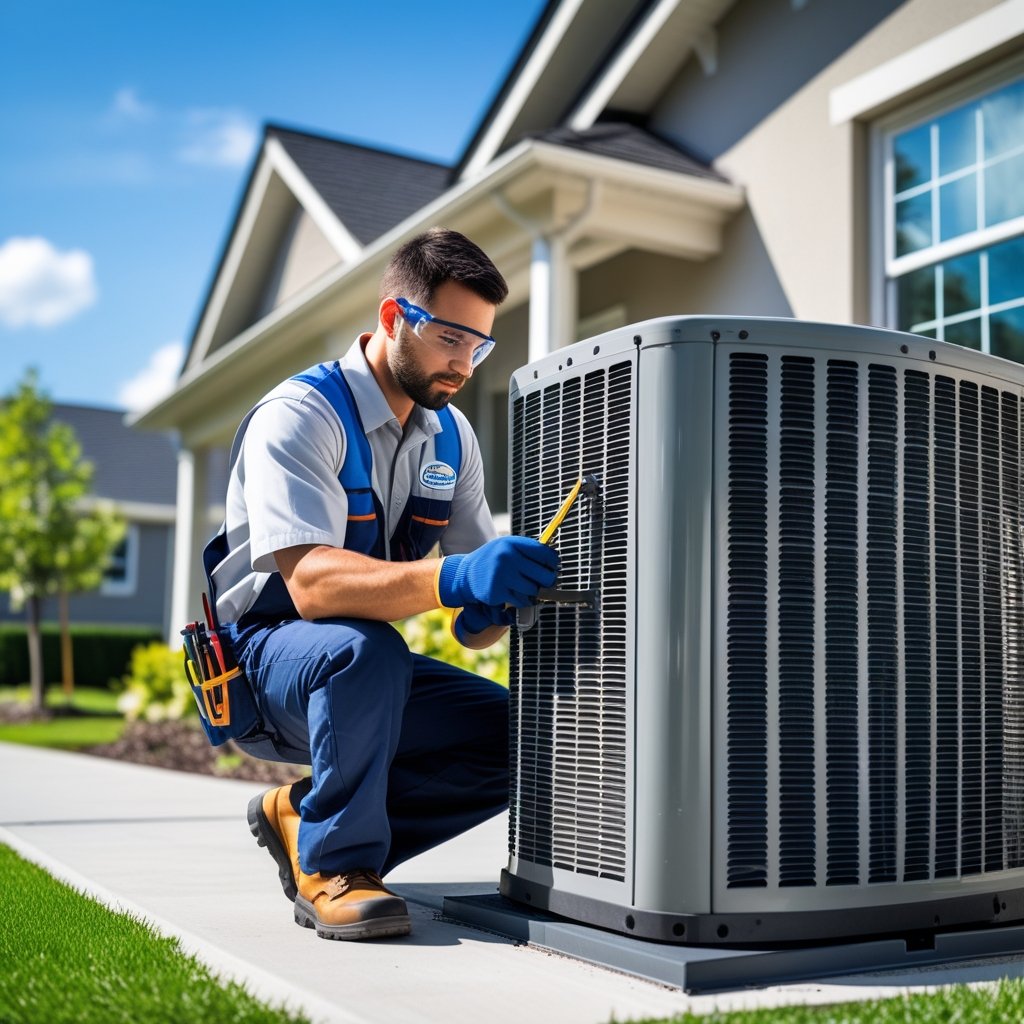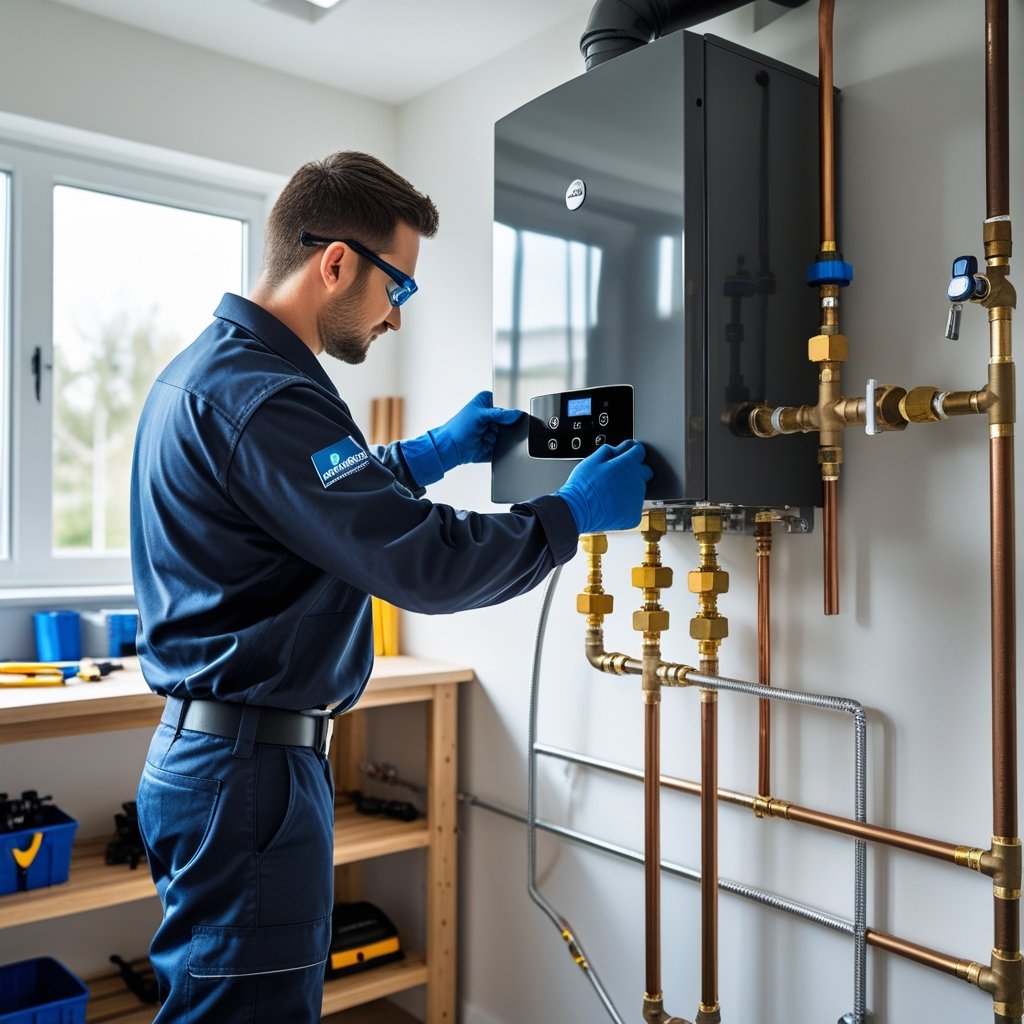Thinking about a new way to heat or cool your home? An HVAC mini-split system could be a solid choice. Mini-split systems offer energy-efficient heating and cooling without the hassle of ductwork, letting you control comfort room by room. That’s a big plus, especially if running ducts just isn’t practical or affordable.
Here at Leo Kob Co., we’ve worked with plenty of South Central Pennsylvania homeowners to install and maintain mini-split systems tailored to their spaces. They’re easier to maintain than bulky HVAC setups and can help trim your energy bills over time. If you’re not sure how these systems work or whether they’re right for you, let’s break it down.
What Is an HVAC Mini Split System?
An HVAC mini split system is a compact, adaptable way to heat and cool specific spots in your house or business. They’re all about energy efficiency and letting you fine-tune temperatures—no giant ducts required.
These systems move heat in or out, depending on the season. There are a few types, depending on how many rooms you want to cover and what features you’re after.
How Mini Split Systems Work
Mini splits use a heat pump to transfer heat between inside and outside. In summer, they pull heat out of your home to cool things down. In winter, they work in reverse, bringing warmth inside.
Since they skip the ducts, mini splits dodge the energy loss that comes with traditional systems. That means lower energy bills and better comfort in each room.
You’ll have an outdoor compressor and one or more indoor air handlers. Each indoor unit is adjustable, so you only heat or cool the rooms you actually use.
Key Components of a Mini Split
There are three main pieces in a mini split:
- Outdoor Unit: Holds the compressor and condenser. This part releases or absorbs heat outside.
- Indoor Unit: Usually hangs on a wall or ceiling, sending out warm or cool air.
- Refrigerant Lines: These connect the indoor and outdoor units, moving refrigerant to transfer heat.
You’ll have a remote or wall thermostat to adjust the temperature. Air filters inside the indoor unit help keep the air clean as it circulates.
Keep up with maintenance—clean those filters and schedule system checks—and your mini split should stay efficient for years.
Types of Mini Split Systems
You’ve got options:
- Single-Zone Systems: One indoor unit for one room. Handy for small spaces or additions.
- Multi-Zone Systems: Several indoor units on one outdoor unit. Each room gets its own controls.
Some new models even combine heat and hot water, saving both space and energy.
At Leo Kob Co., we handle mini split installs and maintenance across South Central Pennsylvania. Whether it’s a single room or a whole house, we’ll help you pick what fits.
Benefits of Choosing an HVAC Mini Split System
Mini splits come with some real perks—they boost comfort, cut energy use, and keep things quieter. You’re in control of each room, saving money on utilities and dodging the usual HVAC noise.
Energy Efficiency Advantages
Mini splits skip the ducts, so there’s no air leaking out and wasting energy. Regular ducted systems can lose up to 30% of their efficiency that way, but mini splits send air right where you want it.
They use inverter-driven compressors, which means the system adjusts power to match what you need—no more running full blast all the time. That keeps energy waste down.
Plenty of models qualify for energy rebates in South Central Pennsylvania, so you might save on installation. Over time, that efficiency means lower energy bills and a smaller carbon footprint.
Customized Comfort and Zoning
With a mini split, you can set the temperature for each room or zone. Want the bedroom cooler than the living room? No problem.
You’re not wasting energy on empty rooms, either. Zoning makes life easier, especially if your family can’t agree on the perfect temperature. Plus, only the zones you use will run, so your system lasts longer.
Quiet Operation Features
Mini splits are pretty quiet—inside and out. The indoor air handlers run low-speed fans, so you don’t get that constant hum.
Since the compressor sits outside, the noisiest part stays away from your living space. If you’re tired of the buzz from a central unit, this is a breath of fresh air.
Quiet operation really matters in bedrooms, offices, or media rooms. Leo Kob Co. does expert installation to keep your system running efficiently and quietly.
Installation Process for Mini Split Systems
Installing a mini split is a multi-step job. You’ll need the right tools, some prep, and a decision—DIY or pro install? There are a few common hiccups along the way, so it pays to know what’s coming.
Required Tools and Materials
Here’s what you’ll need: a drill for holes, a vacuum pump to clear air from refrigerant lines, a manifold gauge set for pressure checks, and a level to get your units straight.
You’ll also need refrigerant lines, electrical wiring, mounting brackets, insulation for the pipes, and sealant. If you’re missing something, the job can drag on or go sideways. Get prepped before you start.
Professional vs. DIY Installation
If you’re handy with plumbing and electrical work, you might tackle a mini split install. Still, hiring a pro from Leo Kob Co. means the job’s safe and up to code.
DIY installs can go wrong—mishandling refrigerant, botched wiring, or placing units in the wrong spot can tank efficiency. Pros have the gear and know-how to avoid those headaches.
You also get warranty protection and less stress with a pro. But if you’re set on DIY, follow the steps closely.
Common Installation Challenges
Mounting the outdoor unit can be tricky. It needs to be level and clear of plants or debris.
Running refrigerant lines between units takes patience—too long or too many sharp bends, and performance drops. Insulate those lines well to avoid energy loss.
Electrical wiring has to be spot-on. Mistakes here can cause outages or worse. And make sure to seal any holes for pipes and wires to block drafts or leaks.
Knowing these challenges helps you plan—or decide when to call in a pro.
Comparing Mini Split Systems to Traditional HVAC
Trying to pick between a mini split and a traditional HVAC? It comes down to cost, maintenance, and what fits your space best.
Cost Differences
Mini splits usually cost less to install than central HVAC if you don’t have existing ductwork. That can save you a bundle. The units themselves might cost a bit more, though, compared to some basic central systems.
In the long run, mini splits save money by only conditioning the rooms you use. Central HVAC heats or cools the whole house, whether you need it or not. Leo Kob Co. can help you find rebates to cut those upfront costs.
Maintenance Requirements
Mini splits are easier to maintain—no ducts to clean or worry about. Just keep the filters clean and you’re good. No duct leaks or mold to deal with.
Traditional HVAC systems need yearly inspections, duct cleanings, and repairs on big parts. Maintenance plans help, but it’s more involved. Still, with regular care, these systems can last decades.
Ideal Applications for Each System
Mini splits shine in homes without ducts, high-use rooms, additions, or anywhere you want zone control. They’re quieter and boost air quality since there’s no recycled air from ducts.
Traditional HVAC works better in large homes or buildings where you want even, whole-house temps. If you already have ductwork in your South Central Pennsylvania home or business, sticking with central air might be easier.
Leo Kob Co. can help you weigh the options and keep your system running, whichever way you go.
Common Applications for HVAC Mini Split Systems
Mini splits are great wherever you need flexible heating and cooling. They make it easy to manage temperature in all sorts of spaces—no major ductwork changes needed. You’ll see energy savings and enjoy simple zoning.
Residential Uses
Homeowners love mini splits for rooms that don’t get enough airflow from the main system—think basements, attics, or new additions. You get comfort without firing up the whole house.
They’re a lifesaver in older homes with no ducts. No need to rip up walls to add them. Mini splits are quiet and respond quickly, so living rooms, bedrooms, or home offices stay comfortable.
We’ve helped a lot of folks in South Central Pennsylvania with mini-split installs. People like the energy savings and the fact that you can just turn them on when you need them. Some models qualify for energy rebates, too, which helps with the cost.
Commercial and Office Solutions
Mini splits fit nicely in smaller commercial spaces or offices where central HVAC just isn’t efficient. You can control work areas separately, so you’re not cooling or heating empty rooms.
They’re easy to install with minimal disruption—good news for retail, salons, clinics, you name it. Precise zone control means staff and customers stay comfortable.
They’re also quieter than traditional units, so office noise drops. Leo Kob Co. serves Elizabethtown and Lancaster with tailored mini split solutions for local businesses looking to manage comfort and costs.
Maintenance Tips for Mini Split Units
Want your mini split to last and run well? A little care goes a long way. You don’t need to be an expert—just stay on top of a few basics.
Regular Cleaning Tasks
Clean or swap out air filters every 1 to 3 months, depending on how much you use the system. Dirty filters choke airflow and kill efficiency. It’s simple: pop them out, rinse with warm water, let them dry, and put them back.
Wipe down the indoor unit’s surface with a damp cloth to keep dust at bay. Check the outdoor unit for leaves or debris—blockages can cause overheating.
If you hear weird noises or notice weak airflow, you might need to clean the evaporator coils or call a pro. Keeping things clean just helps everything work better.
Seasonal Service Checks
Book a professional tune-up at least once a year. A licensed tech from Leo Kob Co. will check refrigerant, wiring, and the system’s overall health.
Before the hot or cold season, make sure your mini split’s ready. Look for ice in winter or dirt on the outdoor unit in summer.
Watch for leaks, strange smells, or uneven temps. If something seems off, call a tech before it gets worse. Regular checkups keep your system humming and your home comfy.
Selecting the Right Mini Split System
Picking a mini split means figuring out what size fits your space, looking at trusted brands, and choosing features that actually save energy. Take your time—getting this right means better comfort and lower costs down the road.
Sizing and Capacity Considerations
Getting the right size really matters. If your system’s too small, it just won’t keep up. Too big, and you’re wasting energy (and money). Start by figuring out the square footage of the rooms you want to heat or cool.
But don’t stop there—ceiling height, insulation, and where your windows are all play a role. Leo Kob Co. can do a full assessment to help you nail the right fit.
The general rule? You want enough BTUs (British Thermal Units) for your space. Here’s a quick guide:
Room Size (sq ft)Recommended BTU RangeUp to 3006,000 – 9,000300 – 6009,000 – 12,000600 – 1,00012,000 – 18,000
Getting the size right means your system works better, feels more comfortable, and doesn’t run up your bills.
Popular Brands and Models
When you’re picking a mini split, stick with brands you trust—ones that have a good track record for quality. Some models run super quiet or have easy-to-use controls, which is always nice.
Brands offer a bunch of different models, so you can find one that fits your needs. Leo Kob Co. stocks solid options that work well in South Central Pennsylvania, so you know you’re covered for our weather.
Look for models with solid warranties and helpful customer support. It’s just less hassle if you ever need repairs or something goes wrong.
Energy-Efficient Features
Energy efficiency isn’t just good for the planet—it’s good for your wallet, too. Check for mini splits with high SEER (Seasonal Energy Efficiency Ratio) ratings. High SEER means your system uses less electricity.
Inverter technology is another big plus. Instead of turning on and off all the time, the compressor adjusts its speed, so you get smoother temperature control and lower energy use.
A few other features to look for:
- Programmable timers
- Sleep mode for quieter, low-energy operation
- Multi-zone control, so you only heat or cool the rooms you’re actually using
Choosing an energy-efficient system can lower your bills and sometimes even qualify you for rebates or incentives.
Give Leo Kob Co. a call if you want help finding the right mini split for your space.
Troubleshooting Common Mini Split Problems
Mini splits are pretty reliable, but like any HVAC equipment, they can act up now and then. Spotting problems early and knowing when to call for help can save you some headaches.
Common Malfunctions
Maybe you notice weak airflow or your rooms just aren’t heating or cooling evenly. Dirty filters or blocked airflow can cause that.
Odd noises—clicking, buzzing, or hissing—usually mean something’s up mechanically. Sometimes, the system stops working because of refrigerant leaks or thermostat issues.
Water leaking near the indoor unit isn’t normal, and ice on the coils (especially in winter) can mess with efficiency.
What to check first:
- Clean or replace air filters often.
- Make sure nothing’s blocking the outdoor unit.
- Watch for leaks or ice on the unit.
Still having trouble? Time to call in a pro.
When to Call a Professional
If your mini split still doesn’t heat or cool right after the basics, don’t push your luck. Refrigerant leaks and electrical problems aren’t DIY territory.
Ongoing weird noises or water leaks can lead to bigger issues if ignored. Pros can spot trickier problems, like compressor trouble or wiring faults.
Leo Kob Co.’s techs know their stuff and work throughout South Central Pennsylvania. They’ll get your system running without trying to upsell you things you don’t need. Honestly, catching problems early can help your mini split last longer and keep your place comfy.
Future Trends in HVAC Mini Split Technology
The next wave of mini split tech is all about making things smarter and more eco-friendly. Sounds good, right? Less fuss, more control, and lower energy bills.
Smart Controls and Automation
Mini splits are getting way more connected. Now you can use an app or even your voice assistant to control the system from anywhere. Forgot to turn off the AC? No big deal.
Systems with sensors will start to figure out your routine and adjust on their own. That saves energy and keeps you comfy with almost no effort. Some even know when a window’s open and will dial things back to avoid wasting power.
Leo Kob Co. can help you pick smart mini splits that match your lifestyle. Honestly, easy controls make a huge difference.
Environmental Impact Improvements
New refrigerants in mini splits are a lot less harmful to the environment than the old stuff. Lower global warming potential, which is a win.
Manufacturers keep pushing for better energy efficiency, too. Improved compressors and heat exchangers mean your system uses less power and leaves a smaller carbon footprint.
Upgrading to modern mini splits means cleaner air and real energy savings. Leo Kob Co. does expert installs so your system works well and lasts.
Frequently Asked Questions
There’s a lot to think about when picking a mini-split system—size, energy ratings, how to keep it running smoothly. Don’t forget to check out installation options, running costs, and real user reviews.
How do I determine the appropriate size of a mini-split system for my home?
Measure the square footage of the area you want to heat or cool. Plan for about 20 BTUs per square foot, but adjust for ceiling height, insulation, and how much sun the room gets.
What are the energy efficiency ratings to consider when choosing a mini-split system?
Look at the SEER (Seasonal Energy Efficiency Ratio) for cooling and HSPF (Heating Seasonal Performance Factor) for heating. Higher numbers are better. Most newer mini splits score above 16 SEER, which is solid.
Can I install a mini-split air conditioner and heater by myself, or do I need a professional?
Some folks try DIY, but honestly? It’s smarter to hire a pro. You’re dealing with electrical work, handling refrigerant, and getting the placement right. Leo Kob Co. suggests professional installation for safety and peace of mind.
What are the potential maintenance requirements for a mini-split HVAC system?
You’ll want to clean the filters and outdoor unit regularly. Once a year, get a pro to check for refrigerant leaks, clean the coils, and inspect electrical connections. It keeps everything running smoothly.
How do the costs of running a mini-split system compare to traditional HVAC systems?
Mini splits generally use less electricity, so your bills are lower. You can also heat or cool by zone, which saves even more compared to systems that run for the whole house. Over time, those savings can really add up, especially if your home has rooms you don’t always use.
What should I look for in mini-split system reviews before making a purchase?
Look for signs the system’s reliable and actually saves you money on energy bills. How does it hold up when it’s freezing or blazing outside? Skim through what folks say about noise—nobody wants a unit that hums like a jet engine. Ease of use matters too; nobody likes fiddling with confusing remotes or settings. And don’t skip over comments about installation—some companies really make a mess of it. Oh, and warranties? Always worth a second glance, just in case.

